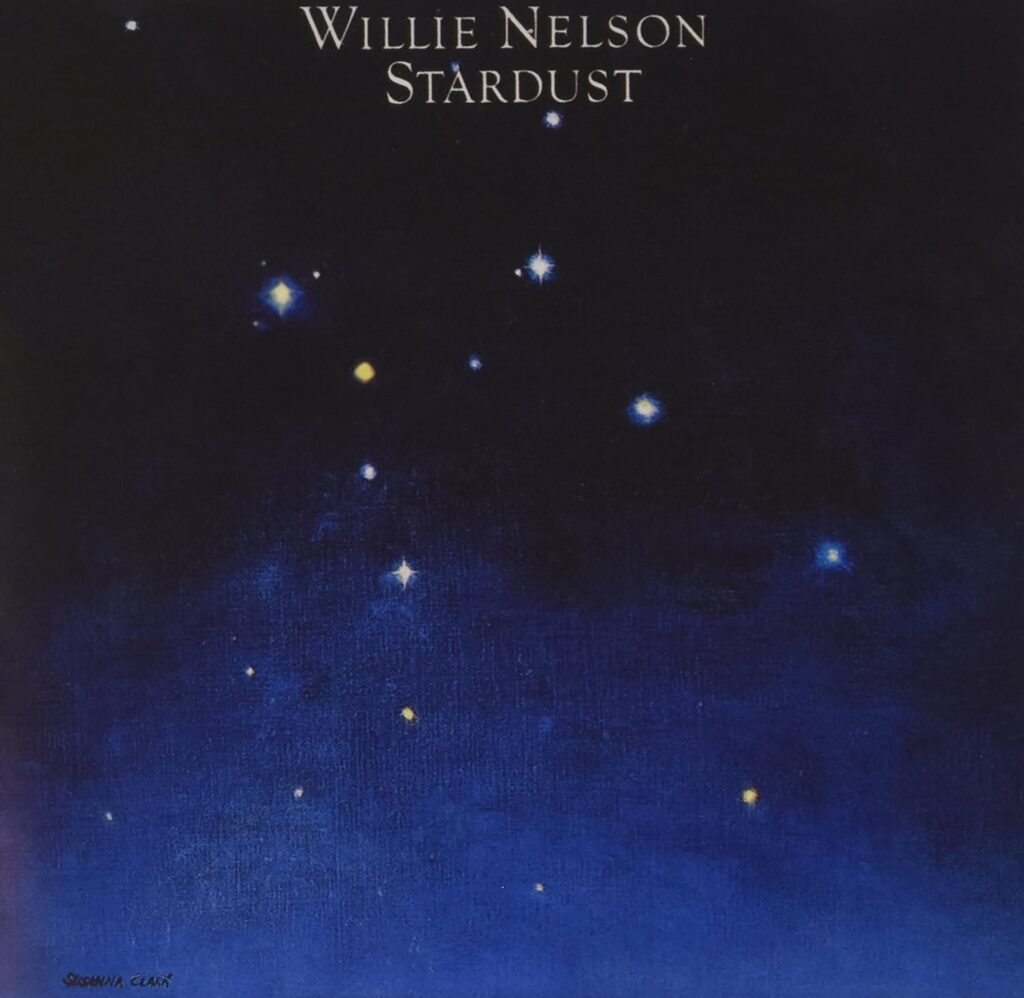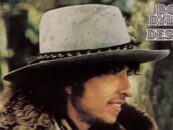 Music history is littered with tales of artist/label conflicts, some more significant than others. What happens when a musician finds their record company rejecting what they’ve produced? When Columbia Records’ head Clive Davis heard Santana’s Caravanserai album, he declared it “career suicide” (it wasn’t). When Geffen Records rejected his Old Ways album, Neil Young responded by delivering another set they hated, Everybody’s Rockin’. And Prince’s feud with Warner Bros. in the ’90s is the stuff of legend.
Music history is littered with tales of artist/label conflicts, some more significant than others. What happens when a musician finds their record company rejecting what they’ve produced? When Columbia Records’ head Clive Davis heard Santana’s Caravanserai album, he declared it “career suicide” (it wasn’t). When Geffen Records rejected his Old Ways album, Neil Young responded by delivering another set they hated, Everybody’s Rockin’. And Prince’s feud with Warner Bros. in the ’90s is the stuff of legend.
Dozens of albums that label execs considered unreleasable, uncommercial or simply too much of a departure from the expected, have gone on to considerable success, including Wilco’s Yankee Hotel Foxtrot, Taylor Swift’s 1989, Kacey Musgraves’ Same Trailer Different Park and Radiohead’s OK Computer. But many others were put on the shelf and never saw the light of day.
When Willie Nelson left Atlantic Records for Columbia in 1975, his manager Neil Reshen negotiated a contract that gave Nelson complete creative control, so when label execs advised against releasing his concept album Red Headed Stranger he could tell them, politely or not, to take a hike. It made him a star, sold millions and established “outlaw country” as a dominant force, moving some of the energy away from Nashville and more to outlying creative hubs like Austin, Texas.
The same issue came around again when Nelson told Columbia’s Rick Blackburn in 1977 that his next project was going to be a disc of tunes from “The Great American Songbook” by Hoagy Carmichael, Irving Berlin, George Gershwin, Duke Ellington, etc. The Columbia staffers were once again mighty displeased, this time because, having established a solid “outlaw” persona with several LPs, he wasn’t content to do something closer to Red Headed Stranger Part Two.
Related: Our Album Rewind of Red Headed Stranger
Titled Stardust, the LP didn’t have a photo of Nelson on the front cover (he had artwork control too). Instead, frustrated Columbia marketers had to deal with a mostly black and dark blue painting of the Pleiades constellation by Susanna Clark, wife of Texas songwriter and Nelson running buddy Guy Clark. Anticipating a flop, Columbia’s country music division reportedly pressed fewer copies than normal on first release.
Recorded between December 3-12, 1977, and issued in April of the following year, Stardust hit #1 on Billboard’s Top Country Albums chart and #30 on its Pop chart, and stayed one of the best-selling country LPs in the U.S.A. for an astonishing 10 years.
In preparation for recording, Nelson enlisted the great Memphis bandleader Booker T. Jones (of Booker T. and the MG’s fame), who was living near Nelson in Malibu, California, to write an arrangement for the 1944 standard “Moonlight in Vermont.” The score delighted Nelson so much he asked Jones to produce and plan out musical parts for the entire upcoming album. Jones had studied music at the University of Indiana, and learned to write for strings and horns as well as R&B and rock instruments, and he had deep conversations with Nelson about keeping the album out of the shadow of audacious predecessors like Ray Charles’ “Georgia on My Mind” and Frank Sinatra’s “September Song.”
Nelson told Rolling Stone, “I had had the idea for some time to make a record like this, but until I met Booker, I wasn’t really sure how I could do these songs. They’re really complicated, and they have a lot of chords in them, and I needed someone like Booker to write and arrange it, because I couldn’t write this stuff down for my guys. There’s this old saying, ‘When the student is ready, the teacher will appear.’”
Musicians were gathered in the Hollywood Hills at guitarist-producer (and Emmylou Harris’ husband) Brian Ahern’s house, where he had a mobile studio parked. Guitarist Jody Payne, drummers Paul English and Rex Ludwick, and bassists Bee Spears and Chris Ethridge recorded basic tracks in the living room and back bedrooms, along with Nelson’s elder sister Bobbie on piano and Jones playing keyboards as needed. Nelson’s long-time right-hand man Mickey Raphael played harmonica in the tiled bathroom shower, which the engineers Bradley Hartman and Donivan Cowart wired for sound.
An antique Stephens tape recorder was part of the equipment that Jones enjoyed using to craft a special, crisp sound for his restrained arrangements. As Jones told John Spong in a 2024 podcast, “We didn’t do very many overdubs. Most of it was just done live. We took over the whole house and [the musicians] were happy. They were very graceful.”
The title track (Hoagy Carmichael music/Mitchell Parish lyrics) leads off, with Nelson and Payne entwining their acoustic guitars and Jones’ underpinning Hammond B-3 organ. “The thing that holds it all together is Willie’s old, beat-up guitar,” explained Jones. “That thing with the hole in it, that thing sounded so good. That’s where the rhythm is on ‘Stardust.’ Those are the notes everybody followed. He just plays it with such aplomb and so tenderly. He just has an understanding of notes and half-notes and relationships between notes. And he played and sang at the same time. So that was the foundation for me and Jody.”
“Stardust” is taken at a leisurely pace, with Nelson’s pure tenor mixed up close to the listener, cushioned beautifully by brilliant touches from drums, harmonica, plenty of guitar solos and a subdued string section conducted by Jules Chaiken.
“Georgia on My Mind” is the album’s longest track, and features a Nelson vocal that negotiates every pause for maximum effect, and shows how bluesy he sounds when he sings just behind the beat. Raphael’s contribution is crucial to the funkiness of the track. As Jones told Spong, contrasting this version to Ray Charles’, “Willie’s song has a coda on it, on the end. And I hired horns to play that coda for emphasis. And when the band got to the end of the song to start playing that D-flat to the G-flat seventh, that’s a blues change. And Willie just let go when that happened. And he just started ‘On my mind…’ And that’s the difference. I mean, he let go with that voice and with that soul.” This track earned Nelson a Grammy Award for Best Male Country Vocal Performance.
Jones’ arrangement for Irving Berlin’s “Blue Skies” has an unusual shuffling beat, another spectacular Nelson solo and the right touch of melancholy—as if the singer cannot believe his good luck—in Nelson’s reading of the lyrics: “Never saw the sun shining so bright/Never saw things go oh so right/Noticing the days hurrying by/When you’re in love, my how they fly/Blue days, all of them gone/Nothing but blue skies from now on.” It was originally written in 1926 as a last-minute addition to the stage musical Betsy, which otherwise had only Rodgers and Hart tunes. When performed by Al Jolson in The Jazz Singer, one of the first film “talkies,” it entered the repertoire of many singers; Nelson, born in 1933, probably heard it numerous times during his boyhood in Texas and Arkansas.
“All of Me,” written in 1931 by Gerald Marks and Seymour Simons, combines high and low emotions, and some bone-dry humor, as a rise in melody is sometimes paired with downbeat lyrics: “All of me, why not take all of me?/Can’t you see I’m no good without you?/Take my lips, I want to lose them/Take my arms, I never use them/Your goodbye left me with eyes that cry/How can I go on, dear, without you?” It’s a spirited performance (the rhythm section is particularly good) but it’s a bit pale compared to the following track, “Unchained Melody.”
Written by Alex North and Hy Zaret, “Unchained Melody” was originally composed for the 1955 prison drama Unchained. Three different versions of the song landed in the Billboard top 10 in ’55, signaling it was bound to be one of the most recorded songs of the 20th century. (The Righteous Bros. had a hit with it twice, in 1965 and when it was featured in the movie Ghost in 1990.) Instead of attempting any operatic tricks, Nelson practically whispers the lyrics, and lets his voice almost crack on the rising “are you still mine?” Payne plays electric guitar for the first time on the LP, and that’s Bobbie Nelson on the lilting piano.
“September Song” might be Nelson’s most emotional performance on Stardust, and every instrumental element shimmers. The song was written by Kurt Weill and Maxwell Anderson for the actor Walter Huston, who was starring in the 1938 musical Knickerbocker Holiday on Broadway and wanted a feature that he could speak as much as sing, since he wasn’t a trained vocalist. Still, Weill’s melody is full of wonderful peaks and valleys. The bittersweet plea of a man wanting to share his “few vintage years” with his lover, is full of Anderson’s seasonal metaphors: “It’s a long, long while from May to December/And the days grow short when you reach September/And the autumn weather turns the leaves to flame/And I haven’t got time for the waiting game.”
Another Broadway showtune, “On the Sunny Side of the Street” is one of the LP’s jazziest performances, with a seemingly effortless swing, and is echoed by Duke Ellington’s “Don’t Get Around Much Anymore.” That tune was an instrumental when Ellington composed it in 1940, but it really took off into classic territory when Bob Russell wrote the clever lyrics two years later, about a guy who just doesn’t have the same joie de vivre after a break-up: “I thought I’d visit the club/Got as far as the door/They’d have asked me about you/Don’t get around much anymore.” Nelson handles both without breaking a sweat.
The slow ballad “Moonlight in Vermont” comes in between the two jazzy numbers, and has a wide-open feel, with Nelson’s acoustic in the lead and a sumptuous string section curling around an especially intimate, unforced vocal, which might show Nelson’s familiarity with Nat “King” Cole. Jones’ arrangement, which got him the Stardust gig, is spellbinding.
The closing number “Someone to Watch Over Me” was penned by the Gershwin brothers in 1926 for the musical Oh, Kay! Originally composed at a fast tempo, it became a classic “torch song” when multiple singers insisted on slowing it down to bring out the sadness of the lyric. Wilson and Jones were certainly aware of celebrated versions by Ella Fitzgerald, Frank Sinatra, Sarah Vaughan and Barbra Streisand when they decided to tackle it, treating it more like a folk song, with a lovely acoustic guitar solo in the middle. Nelson’s vocal is perhaps a bit too reverent, giving very little push to central lyrics like “Won’t you tell her please to put on some speed/Follow my lead/Oh how I need/Someone to watch over me.”
Stardust remains Willie Nelson’s best-selling disc, having gone many times platinum. [It’s available in the U.S. here and in the U.K. here.] He’s announced the release of his 154th overall album, Oh What a Beautiful World, for April 25, 2025, and will be on tour as part of his Outlaw Music Festival this summer, with Bob Dylan, and many others. He’ll turn 92 on April 29, 2025. [His vast catalog is available in the U.S. here and in the U.K. here.]
Watch Willie perform “Stardust” at Japan’s Budokan in 1984
- Bob Dylan’s ‘Desire’: Story Time - 01/05/2026
- Smokey Robinson & the Miracles’ ‘Going to a Go-Go’: Life of the Party - 11/11/2025
- Patti Smith’s ‘Horses’: Poetry In Motion - 11/10/2025







1 Comment so far
Jump into a conversation